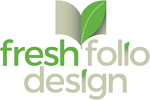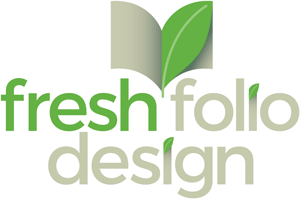These past few weeks we have talked about what makes a successful brochure. The type of brochure that captures the attention of your audience, while setting you apart from competitors.
A well-designed brochure:
- has a clear hierarchy
- utilizes key design elements such as contrast, repetition, alignment and proximity
- includes relevant, color-corrected, wisely-cropped photography
- a selection of strong fonts
- and a color palette that fits the tone of the brochure.
However, all of that would be for naught, if today’s topic is mishandled. Sadly, selecting the right paper is an area where many businesses completely miss the boat.
People tend to focus their energy and resources at the beginning of the project and, by the time the file is ready to go to print, many businesses decide that this is the time to cut corners and print on whatever paper is the cheapest. That would be a horrible, short-sighted mistake.
The first point of interaction with your brochure is the paper.
The worst thing that you can do, after putting all that effort and money into a quality brochure, is compromise by selecting a paper that looks and feels flimsy and unsubstantial. We guarantee that no amount of engaging copy or strong design will overcome poor quality paper. It’s like pulling up to a multi-million dollar mansion and entering through a tent flap.
Let’s talk a bit about the basics you want to keep in mind when dealing with paper.
Start Talking Early
It’s never too early to start talking with your print vendor about a project that you are working on. Even in the early days of concepting, you should view your printer as a valuable team partner and talk to them about the impression you want to achieve with your project.
Once you are designing the brochure you definitely want to share with the printer your thoughts regarding the paper and printing of the brochure. Clear communication will provide the best opportunity for a printer to best serve you and your project.
Even if the direction of the project changes, it is still better to maintain ongoing conversations with your printer about what you want to do rather than waiting until just prior to sending files.
Never underestimate the amount of knowledge and insight an experienced printer can provide. Whether it is hunting down paper samples or the production department providing possible solutions about a particular effect you would like to achieve with your artwork, the best printers are the ones who strive to understand what you want and then utilize their resources to make it happen. However, that’s only possible when you start the conversation early and continue to update them along the way regarding the status of the project.
Weights & Finishes
When it comes to considering paper choices, most of what you will decide will be revolve around two factors: weight & finish. Let’s look at each of these terms more closely.
Most brochure printing involves dealing with two different types of paper weight: text & cover. When thinking of text weight bring to mind all-purpose paper used for things such as letterhead and copy paper; relatively thin and yielding. While cover weight is the type of thing you would use for things like business cards or postcards; typically more rigid and thick.
In terms of brochure printing you may select a cover weight stock for the cover of the brochure, while the interior would probably be printed on a text weight stock.
Beyond just selecting cover or text weight there is also a measurement given to paper (referenced in pounds — this is a thickness measurement, as well as a weight measurement). For example, there is 80# cover or 100# cover. The number is determined by how much 500 sheets weigh (also called Basis Weight). So 100# cover is heavier (also thicker) than 80# cover.
 There is also a metric system measurement that can also be used to identify a weight of paper called GSM (grams per square meter). While the Basis Weight is determined by how much 500 sheets weight, the GSM measurement is determined by the weight of a single sheet of paper.
There is also a metric system measurement that can also be used to identify a weight of paper called GSM (grams per square meter). While the Basis Weight is determined by how much 500 sheets weight, the GSM measurement is determined by the weight of a single sheet of paper.
Now that we have a basic understanding of what the weight of a paper indicates, let’s talk finishes. Again, there are many things to take into consideration when discussing finish, but a good, initial step is to discuss the general between uncoated stock and coated stock.
Coated stock refers to the paper having a coating applied that alters the surface of the paper. There are options regarding the type of coating (examples: glossy, matte, or satin) and the result is a smoother surface because the pores, or tooth, of the paper are filled. The benefits of coated paper is that it is more durable and generally produces a sharper printed image because the inks stay on top of the paper rather than being absorbed.
Uncoated stock is paper that doesn’t have a coating, which is how all paper starts out. The lack of a coating results in the paper absorbing more of the ink and is generally easier to write on. This is definitely something that you want to consider as you look at the purpose of your piece. Also, in contrast to coated paper, uncoated can have a softer feel and is a great choice when you are going for a more “natural” or “earthy” look.
Asking the Right Questions
With this basic explanation of paper weights and finishes, the final part we want to share is learning how to decide which paper best suits your brochure. For that you need to ask yourself some questions:
- What is the intended use for the final piece and how long does it need to last?
(Promoting one-time event or using it over the course of the next year.) - Does the piece need some rigidity?
(The weight or thickness of the paper would need to be larger.) - Will the piece be folded?
(Thicker weight papers need to be scored so they fold without cracking.) - Will you need to be able to write on the paper?
(The type of finish can impact writability.) - What kind of images are you printing?
(Coated paper would give sharper, brighter images, uncoated paper the images would be softer.) - Which finish best creates the effect you want to achieve?
(This is referring to the overall feel of the brochure.) - Are mailing costs a concern?
(A self-mailer needs to be durable, but keep in mind that weight can impact postage costs)
These are a sampling just a few of the questions that may be helpful to ask when trying to decide on a paper. We would recommend that you share your answers to these questions with your printer to determine the samples of paper you want to see.
In most cases, you can get paper samples from the printer in order to get a closer look and experience the feel of the paper. Once you are clear on print size and page count, you can even request a mock-up with the paper you are considering in order to experience it first-hand prior to pulling the trigger on printing.
While this is just scratching the surface of the possibilities with paper, the best thing you can do is to talk to your print vendor early about paper. It can be a confusing topic, so don’t worry if you don’t understand everything. Most printer are more than happy to help clarify the options.
That’s why it is always best to partner with a professional who understands your specific project goals and can guide you through the process, selecting the paper that is the best fit for your brochure.




Leave a Reply